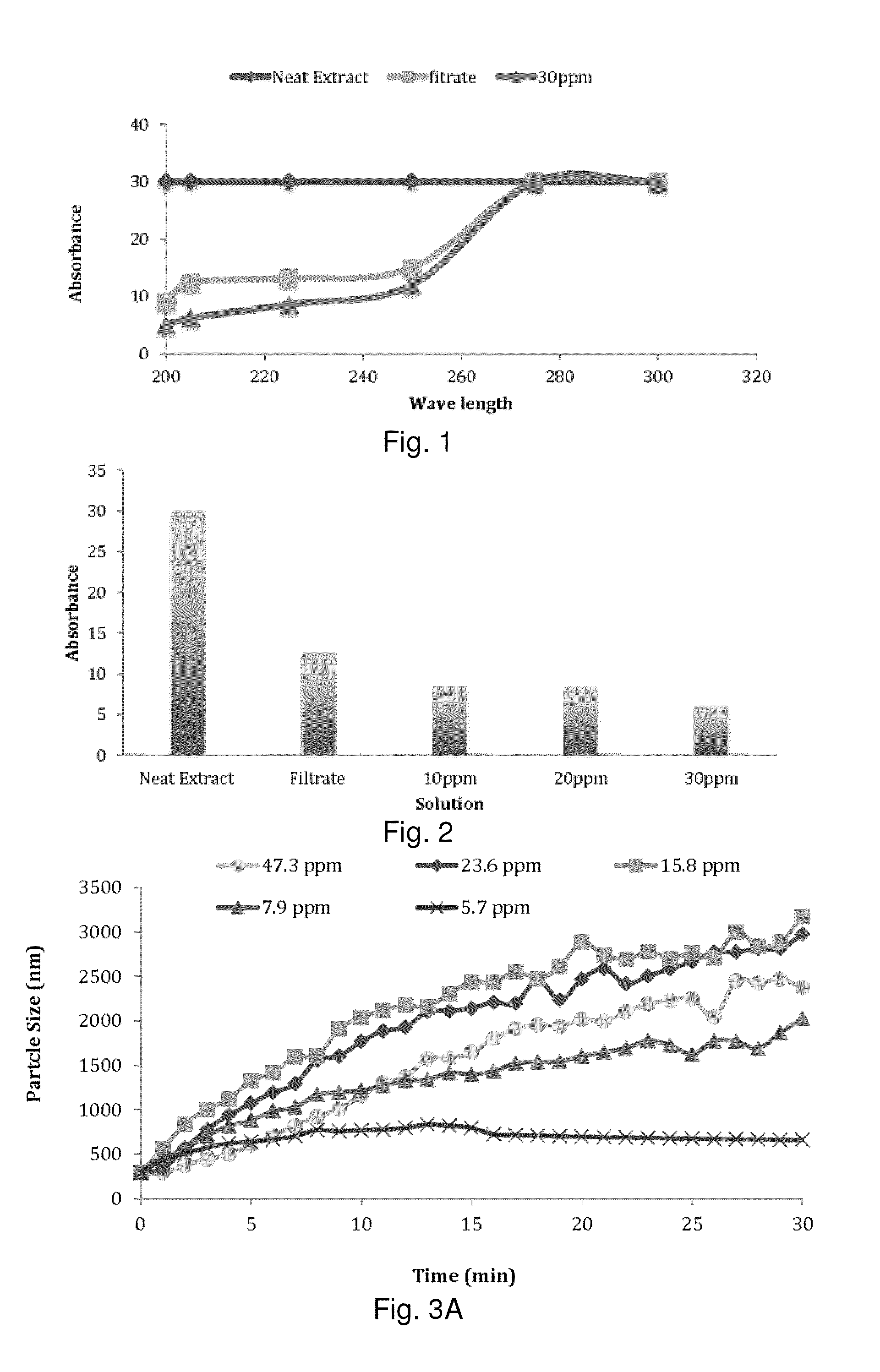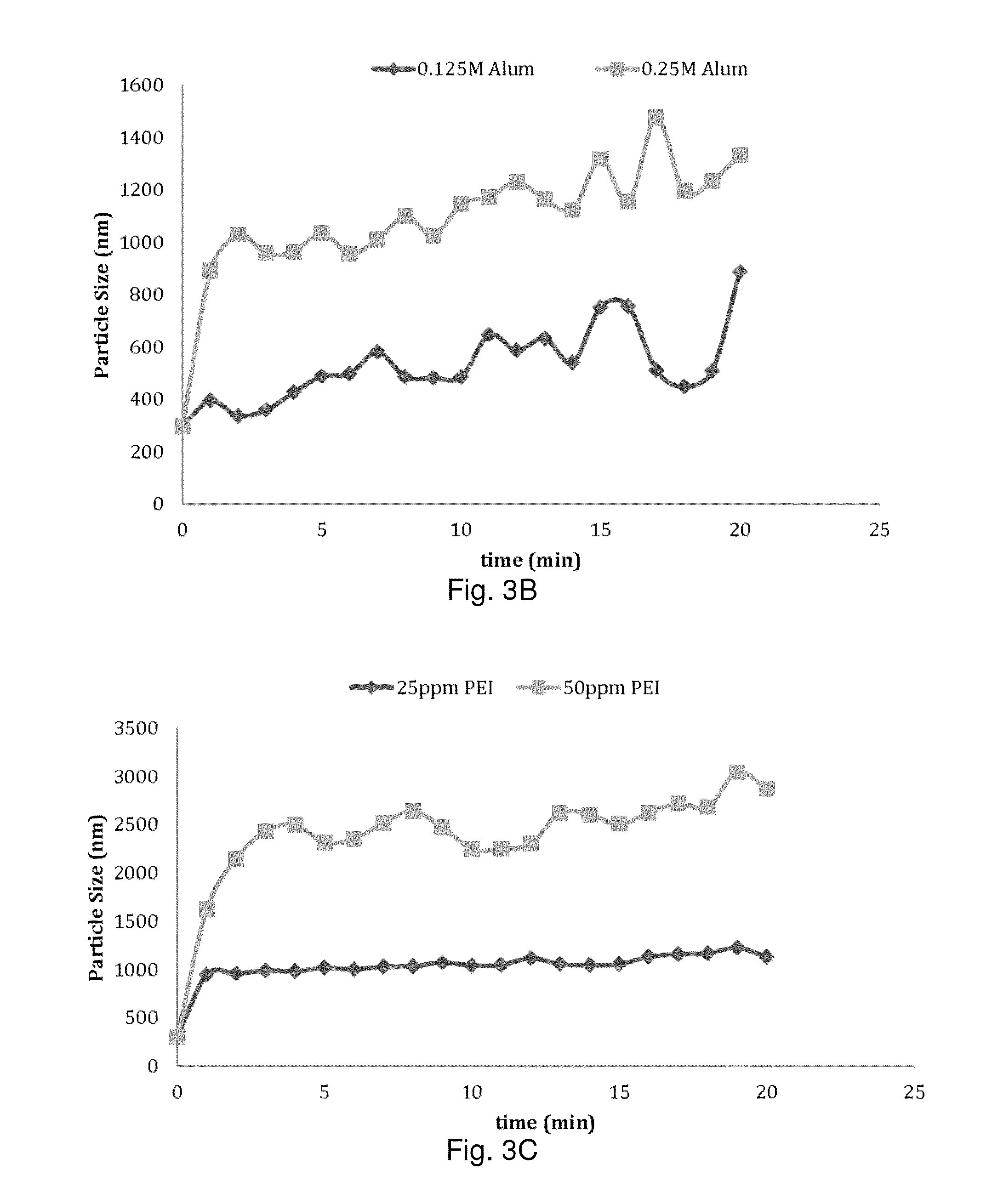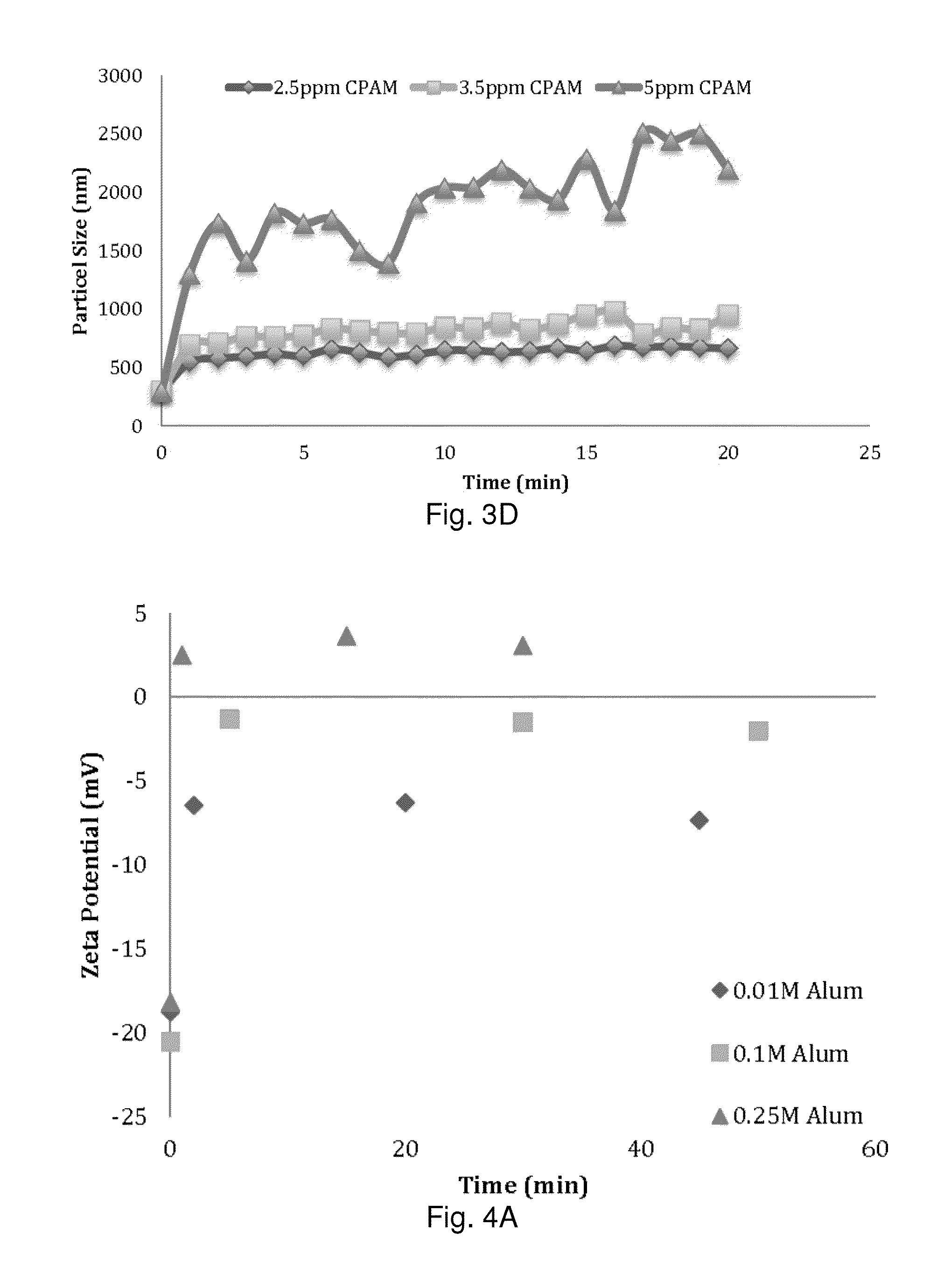Flocculation of lignocellulosic hydrolyzates
a technology of lignocellulosic hydrolyzates and flocculation, which is applied in the direction of differential sedimentation, sedimentation settling tank, centrifugal force sedimentation, etc., can solve the problems of uneconomical separation on a large scale, lack of efficient and cost effective separation and purification methods, and complex hydrolyzate solutions produced by such pretreatment processes
- Summary
- Abstract
- Description
- Claims
- Application Information
AI Technical Summary
Benefits of technology
Problems solved by technology
Method used
Image
Examples
Embodiment Construction
[0068]Hydrolyzates
[0069]Autohydrolysis or hot water extraction were carried out in a MK digester using 500 g oven dried sugar maple wood chips and 4:1 liquor (water) to wood ratio at 160° C. for 2 hours. FIGS. 17 and 18 show the mass removal over time and effective diameter of particle size as a function of mass removed, respectively.
[0070]Particle size and zeta potential of the wood hydrolyzate were measured using a Brookhaven Particle Size and Zeta Potential Analyzer (90 Plus® and ZetaPlus®, Holtsville, N.Y.). A Micro100 turbidimeter (HF Scientific Inc., Fort Myers, Fla.) was used to measure turbidity of the samples (Nephelometric turbidity units, NTUs).
[0071]It was necessary to dilute the samples at least 10 fold to measure the turbidity, particle size and zeta potential. All the dilutions required were performed with filtrated (100 nm filter) reverse osmosis water.
[0072]Sugar maple (Acer saccharum) chips were prepared from debarked wood logs in a Carthage chipper. The chips were...
PUM
| Property | Measurement | Unit |
|---|---|---|
| Temperature | aaaaa | aaaaa |
| Fraction | aaaaa | aaaaa |
| Time | aaaaa | aaaaa |
Abstract
Description
Claims
Application Information
 Login to View More
Login to View More - R&D
- Intellectual Property
- Life Sciences
- Materials
- Tech Scout
- Unparalleled Data Quality
- Higher Quality Content
- 60% Fewer Hallucinations
Browse by: Latest US Patents, China's latest patents, Technical Efficacy Thesaurus, Application Domain, Technology Topic, Popular Technical Reports.
© 2025 PatSnap. All rights reserved.Legal|Privacy policy|Modern Slavery Act Transparency Statement|Sitemap|About US| Contact US: help@patsnap.com



